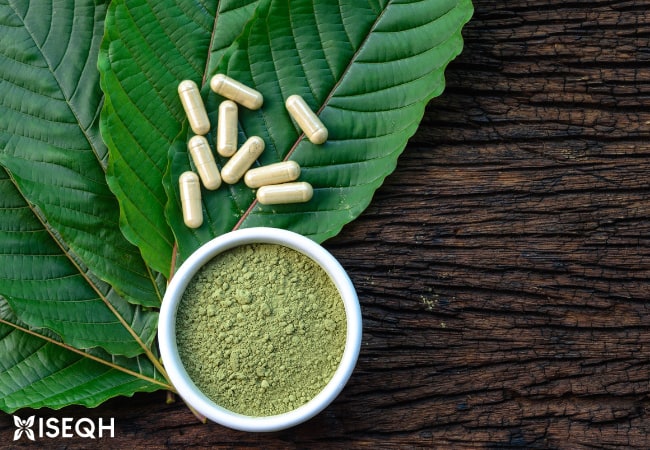
Table of Contents
Kratom: An Overview of Its Benefits, Risks, and Legality
Kratom, also known as Mitragyna speciosa, is a tropical evergreen tree native to Southeast Asia, particularly Thailand, Indonesia, Malaysia, Myanmar, and Papua New Guinea. Its leaves have been traditionally used for their medicinal properties, including pain relief, anxiety reduction, and opioid addiction treatment.
In recent years, Kratom has gained popularity in Western countries as an alternative medicine, recreational drug, and dietary supplement. However, its use and legality are still controversial, with conflicting opinions and regulations among different jurisdictions. In this article, we will explore the various aspects of Kratom, including its history, pharmacology, benefits, risks, and legal status.
History of Kratom
Kratom has a long and rich history in Southeast Asia, where it has been used for centuries by indigenous communities for various purposes. Its leaves were chewed, brewed, or smoked for their stimulant and analgesic effects and cultural and spiritual significance.
Kratom was also used as a remedy for diarrhea, fever, cough, and other ailments. However, its use was often stigmatized and restricted by colonial powers and later governments, who saw it as a threat to public health and social order. In Thailand, for instance, Kratom was banned in 1943 under the Kratom Act, which imposed harsh penalties for possession and sale.
Despite these restrictions, Kratom continued to be used and traded underground. Its popularity even increased during the opium wars and the Vietnam War, when soldiers and civilians used it to cope with physical and psychological stress.
Pharmacology of Kratom
The active compounds in Kratom are called alkaloids, which include mitragynine, 7-hydroxy mitragynine, and mitraphylline. These alkaloids have different effects on the brain and body, depending on the dose and individual differences. Kratom is a mild stimulant at low doses, enhancing mood, energy, and sociability.
At higher doses, Kratom is a sedative, relieving pain, anxiety, and insomnia. Kratom also interacts with various brain and nervous system receptors, including opioid, serotonin, and adrenergic receptors, which may explain its therapeutic effects and potential risks.
Benefits of Kratom
Kratom has been traditionally used for medicinal purposes, and some of these uses have been supported by scientific research. The following are some of the reported benefits of Kratom:
Pain relief: Kratom has analgesic properties that can help relieve acute and chronic pain, including neuropathic pain and inflammation. Kratom can also enhance the effects of other painkillers, such as opioids and NSAIDs, and reduce their side effects.
Anxiety reduction: Kratom has anxiolytic properties that can help reduce symptoms of anxiety, depression, and PTSD. Kratom can also improve mood, social behavior, and cognitive function.
Opioid addiction treatment: Kratom has been used as a natural alternative to opioids to treat opioid addiction and withdrawal. Kratom can alleviate withdrawal symptoms and cravings without causing respiratory depression or euphoria.
Energy and focus: Kratom can be a natural stimulant, boosting energy, focus, and productivity. Kratom can also enhance cognitive performance, creativity, and motivation, without causing jitteriness or restlessness.
Immune system support: Kratom contains antioxidants and immunomodulatory compounds that can support the immune system and reduce the risk of infections, inflammation, and chronic diseases. Kratom can also improve digestion, metabolism, and overall well-being.
Risks of Kratom
While Kratom has potential benefits, it also has potential risks and side effects, especially when used inappropriately or excessively. The following are some of the reported risks of Kratom:
Addiction and dependence: Kratom can be addictive and habit-forming, especially when used frequently or in high doses. Kratom withdrawal symptoms can include anxiety, insomnia, tremors, nausea, and sweating.
Overdose and toxicity: Kratom can be toxic and lethal at high doses, especially when combined with other drugs or alcohol. Kratom overdose symptoms can include respiratory depression, seizures, coma, and death.
Adverse effects: Kratom can cause various side effects, such as nausea, vomiting, constipation, dry mouth, itching, and sweating. Kratom can also interact with other medications and supplements and may worsen certain conditions, such as liver or kidney disease.
Contamination and adulteration: Kratom products are not regulated by the FDA or other authorities and may be contaminated with harmful substances, such as heavy metals, bacteria, or fungi. Kratom products may also be adulterated with other drugs, such as opioids or stimulants, which can cause unpredictable and dangerous effects.
Legal Status of Kratom
The legal status of Kratom varies widely among different countries and states and is subject to ongoing debates and changes. In some jurisdictions, Kratom is banned or strictly regulated, while in others, it is legal or unregulated. The following are some of the current legal statuses of Kratom:
Banned countries: Kratom is banned in several countries, including Thailand, Malaysia, Myanmar, Australia, Denmark, Finland, and Lithuania. In these countries, kratom possession, sale, and use are punishable by fines, imprisonment, or even death.
Regulated countries: Kratom is regulated as a controlled substance in some countries, such as the United States, Canada, and the United Kingdom. In these countries, Kratom is classified as a Schedule I drug, meaning it has no accepted medical use and a high potential for abuse and dependence. However, some states and provinces have passed laws that allow for using Kratom for medical or recreational purposes or for research purposes.
Legal countries: Kratom is legal in some countries, such as Indonesia, where it is widely cultivated and exported. In these countries, Kratom is often used for traditional or medicinal purposes and may be sold in markets or pharmacies.
Conclusion
Kratom is a natural plant with potential benefits and risks, depending on its use and dosage. Kratom has been traditionally used for pain relief, anxiety reduction, and opioid addiction treatment and has gained popularity in Western countries as an alternative medicine and recreational drug.
However, Kratom is still controversial and subject to regulation and prohibition, due to its potential for addiction, toxicity, and adulteration. Therefore, it is important to use Kratom responsibly, under the guidance of a healthcare professional or a reputable vendor, and to be aware of its legal status in your jurisdiction.
FAQs
Is Kratom legal in the United States?
The DEA regulates Kratom as a Schedule I drug, but some states have passed laws allowing for its use and sale.
Can Kratom help with weight loss?
There is limited evidence to support the use of Kratom for weight loss. While Kratom can increase metabolism and reduce appetite, it can cause nausea and digestive issues. It should not be used as a healthy diet and exercise substitute.
Is Kratom addictive?
Yes, Kratom can be addictive and habit-forming, especially when used frequently or in high doses. Kratom withdrawal symptoms can include anxiety, insomnia, tremors, nausea, and sweating.
Can Kratom interact with other medications?
Yes, Kratom can interact with other medications and supplements and may worsen certain conditions, such as liver or kidney disease. It is important to consult a healthcare professional before using Kratom, especially if taking prescription medications.
How should I use Kratom?
Kratom should be used responsibly under the guidance of a healthcare professional or a reputable vendor. Kratom should be taken in small doses, starting with 1-2 grams and gradually increasing as needed. Kratom should not be taken with other drugs or alcohol and should not be used as a substitute for medical treatment.








